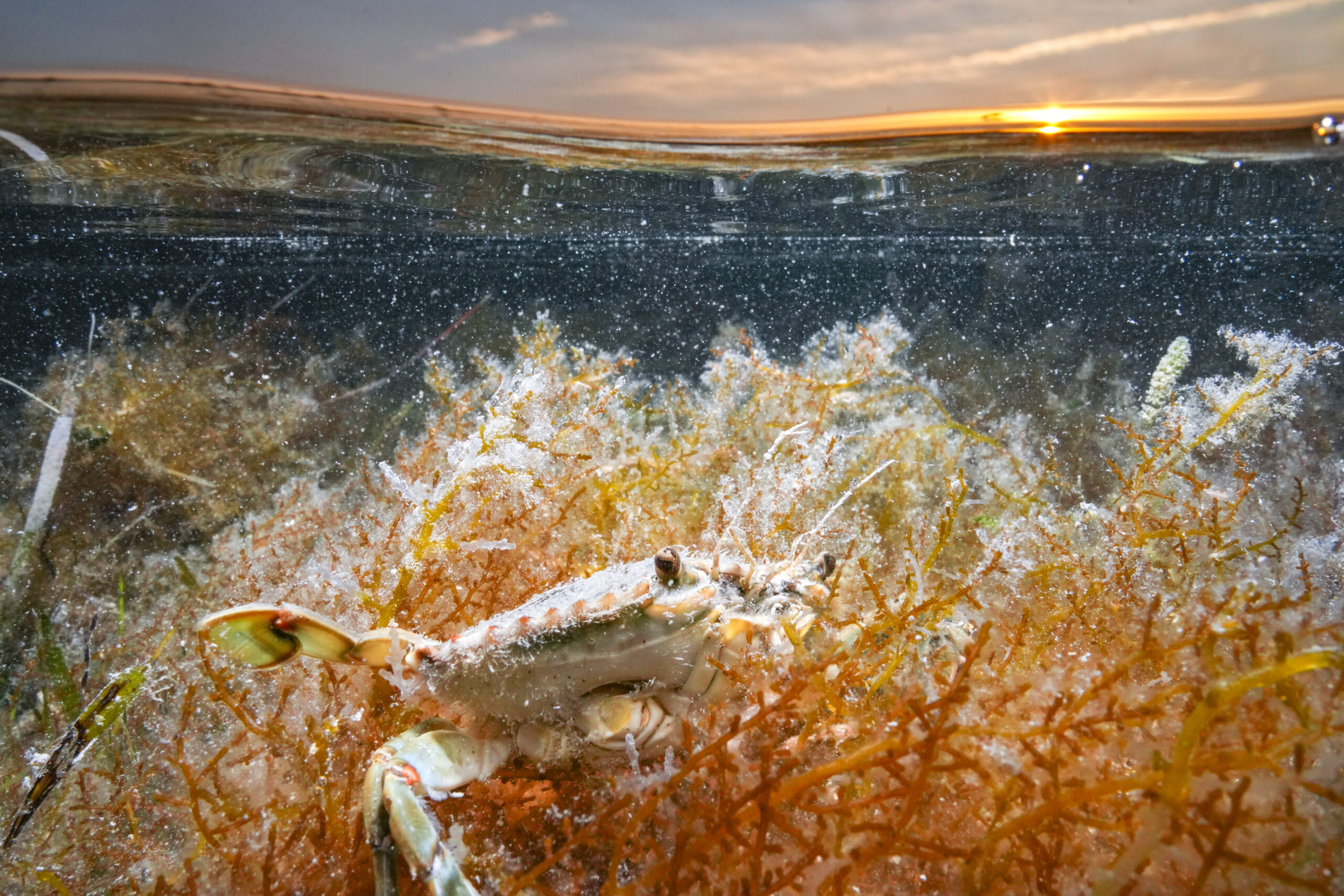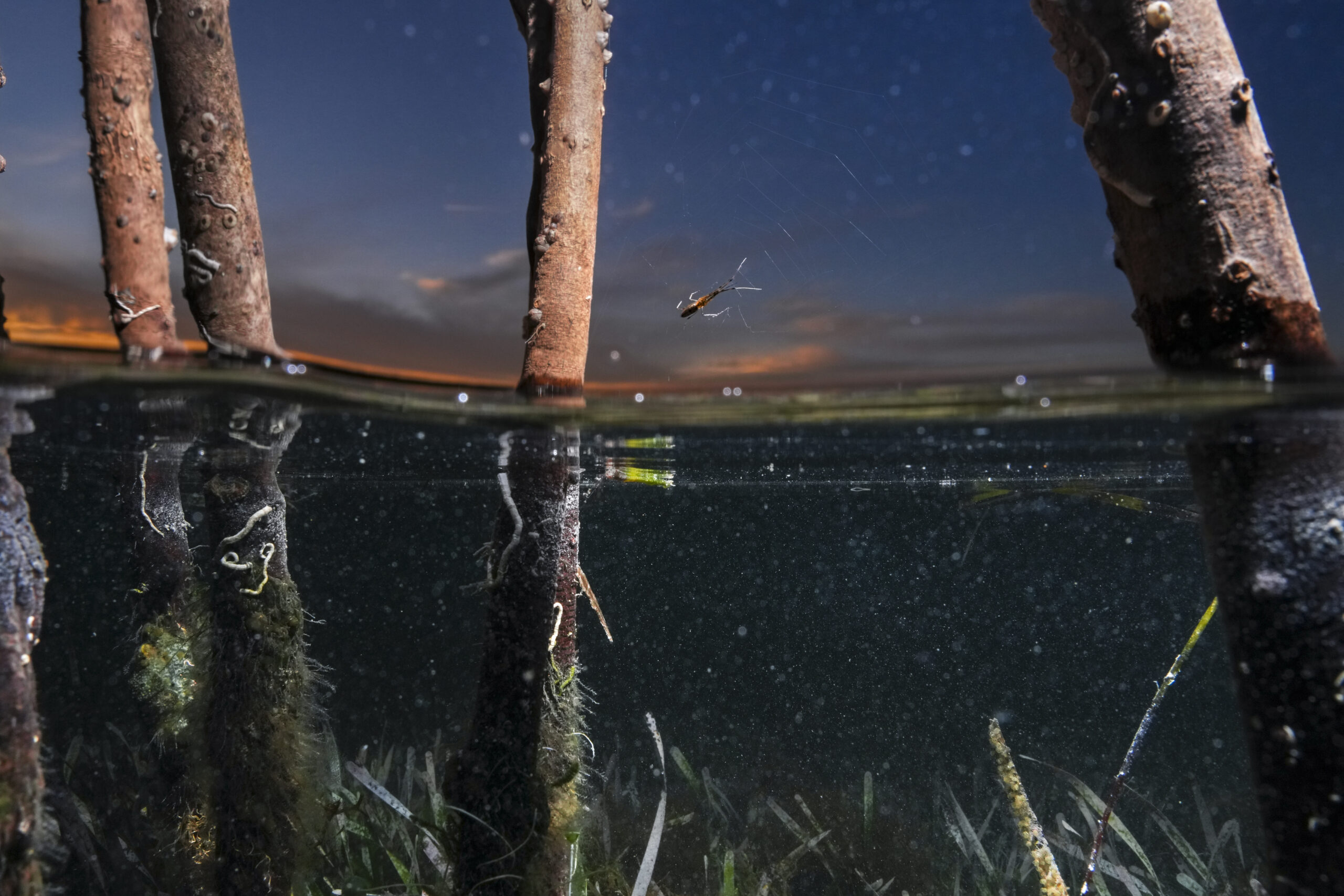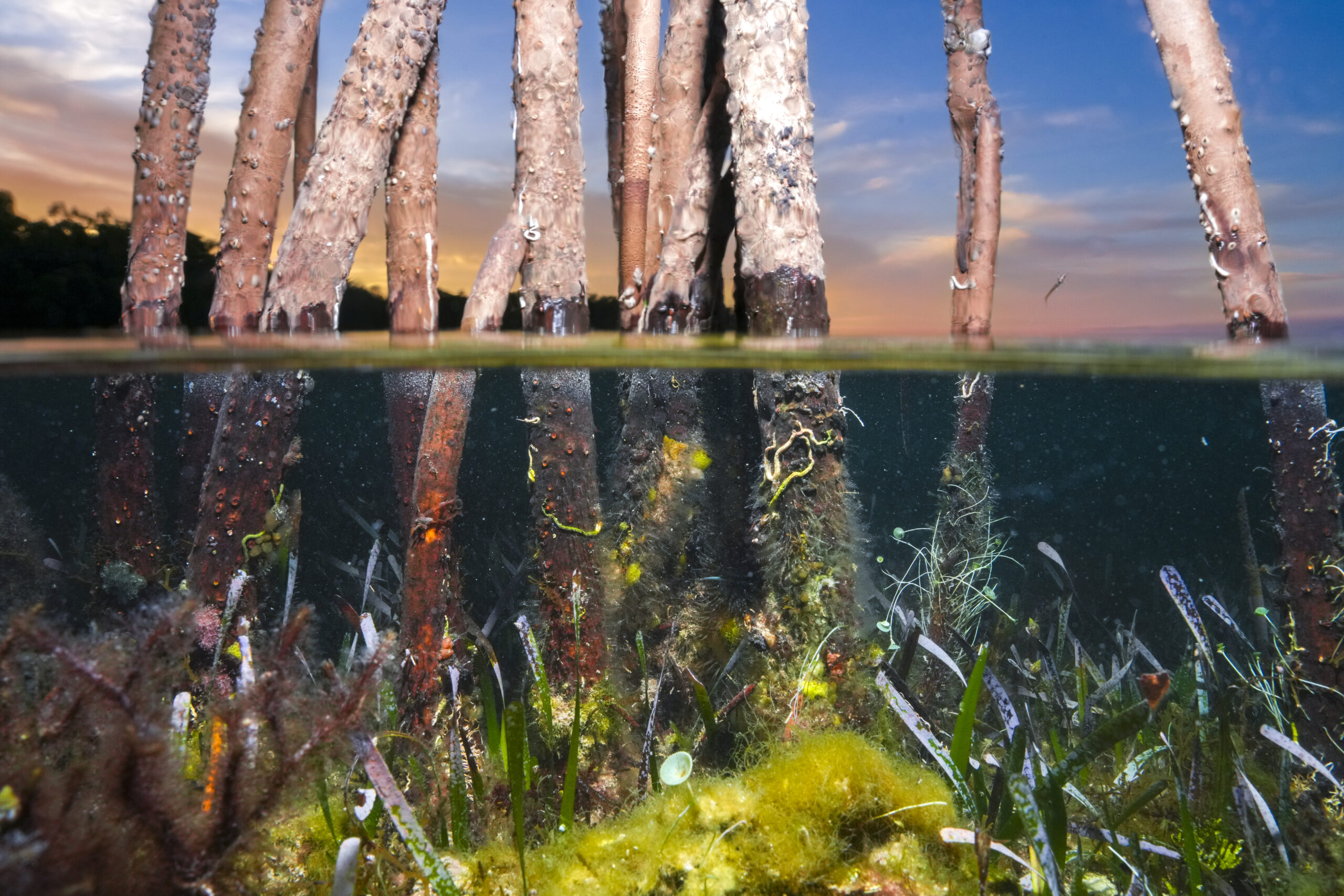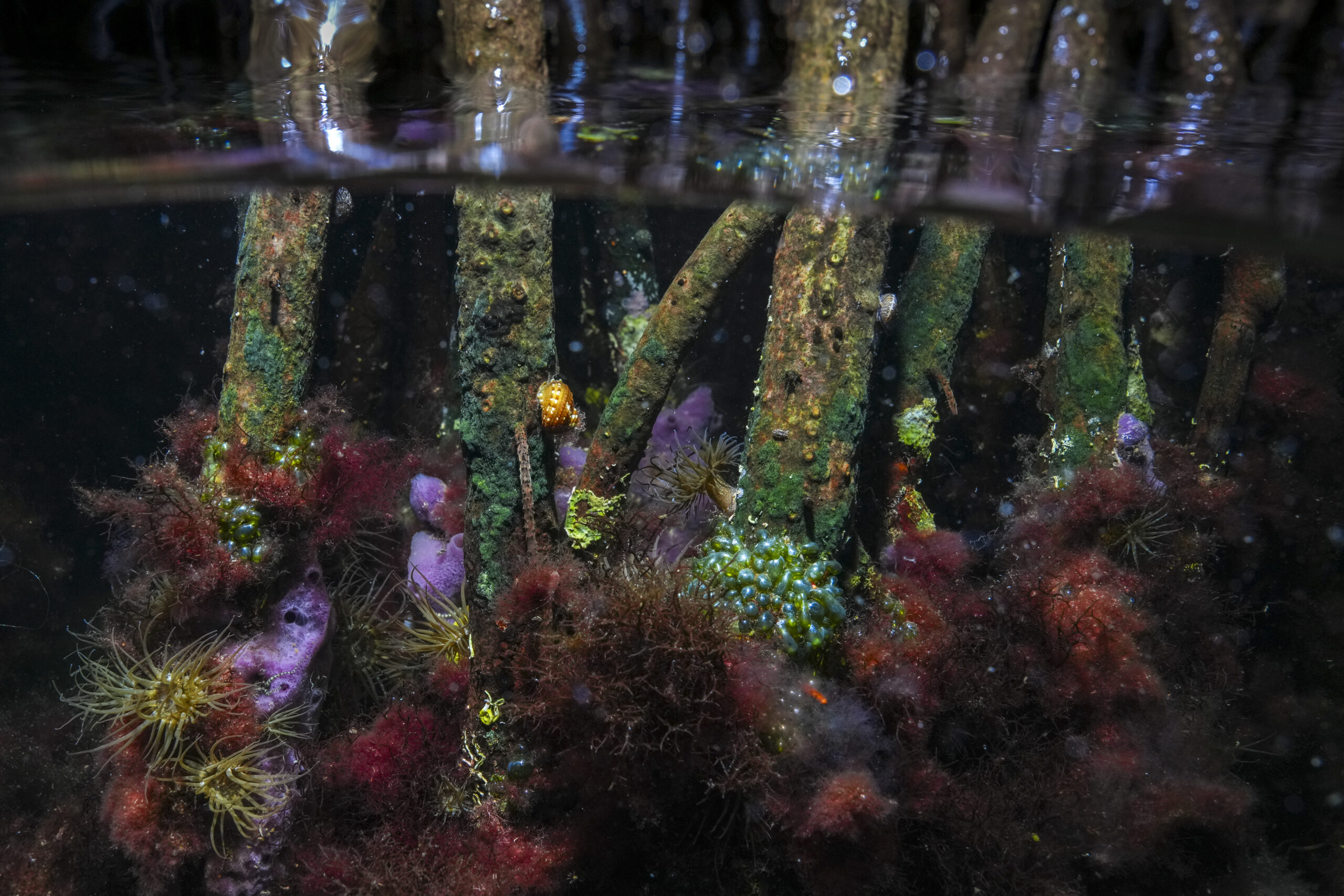Seconded By: Frank Meo,
In a world of constant motion and instant gratification, we often glide past the extraordinary, missing the intricate worlds that hide in plain sight.
“The Underwater World of Mangroves” offers an exploration of a hidden ecosystem among the roots of a mangrove forest, revealing extraordinary biodiversity that thrives mere inches below the water’s surface. Through underwater photography, this project embarks on a visual journey into one of nature’s most overlooked yet vital ecosystems.
My journey into this underwater realm began during the scorching July 2023 heatwave in the Florida Keys—the hottest four days ever recorded. While paddleboarding behind my home, I discovered thousands of bleached anemones scattered throughout the mangrove forest like flags of surrender. This moment of discovery sparked a profound question: what else lives and dies in this hidden underwater world when no one is paying attention?
In search of an answer, I began to document the space where two worlds meet— each split-shot image capturing the vibrant relationships between flora and fauna that remain invisible to most observers.
Among the most threatened habitats in the world, mangrove forests have historically been undervalued and misunderstood, and as a result, cleared to make room for development. The mangrove population in Monroe County, Florida has plummeted 60% over the last 70 years due to human development, and what’s left now faces the mounting pressures of climate change.
But across the globe, mangroves play a vital role in coastal ecosystems and communities, functioning as nurseries for countless species, barriers against storm surge and coastal erosion, and some of the most effective carbon sinks on Earth.
Yet when most people encounter mangroves, they see only the canopy above the water. Beneath the waterline, however, lies a hidden universe: an underwater ecosystem that pulses with life, adapts with the seasons, and harbors creatures so otherworldly one might think they’re from outer space.
This project, supported by the National Geographic Society, serves as both artistic exploration and conservation testimony. My work seeks to reframe the narrative of mangroves by revealing the extraordinary biodiversity that thrives among their roots; it shows viewers that when we protect a mangrove tree, we are also protecting an underwater world of life.
“The Underwater World of Mangroves” reveals that with perspective, even the most familiar places can transform our understanding of what it means to be present in the natural world. By capturing the intricate ecological relationships that define these hidden ecosystems, I invite viewers to question what they might discover should they pause long enough to let life unfold before them.
These meaningfully complex worlds exist all around us— they are simply waiting for us to notice.

A Berghia nudibranch rests on a piece of seaweed tangled between the roots of the red mangroves (Rhizophora mangle). These sea slugs are known to feed exclusively on glass anemones (aiptasia pallida).

A blue crab sits in a bed of seaweed as the sun sets along the Florida Bay. Its front pinchers are missing, likely lost in a recent battle or in the molting process.

A yellow Florida sea cucumber (Holothuria floridana) feeds on ditritus in the shallows of the mangrove forest, beside a fallen red mangrove (Rhizophora mangle) leaf.

An orb weaver rests on its web strung low between the mangrove roots. It pulls its legs together in a defensive stance, as it waits for dinner to be served.

Two lettuce nudibranchs (Elysia crispata)– named for their lettuce like appearance– meet in the grassy shallows of the mangrove forest. These solar powered sea slugs absorb the chloroplasts from the algae they eat, using them like solar panels to absorb energy from the sun and giving them their green appearance. Without sufficient food, the slugs will consume their stored chloroplasts and fade to orange.

Cooler winter weather brings vibrant colors to the underwater world of mangroves. A glass anemone (aiptasia pallida) takes the spotlight amidst fuzzy pink Cotton Candy algae (Callithamnion).

Turtle grass (Thalassia testudinum), calcareous tube worms, marine snails, and various kinds of macro algae create a mosaic of life just below the water’s surface at sunset.

A True Tulip snail (Fasciolaria tulipa) rests on a bed of green chaetomorpha algae; its purple galaxy patterned flesh peaks out behind its lid-like operculum.

During the high tides of night, two horseshoe crabs (Limulidae) engage in an evening mating ritual. The small male horseshoe crab uses specialized front claws to hook himself onto the shell of a larger female. Eventually, they migrate to a sandy or muddy shoreline in the mangroves where the female digs a nest and lays her eggs, and the male fertilizes the eggs.

When the sun sets, life below the surface wakes. A closer look reveals turbo snails, isopods and anemones feasting amongst red seaweed, while a brittle star’s (class Ophiuroidea) legs peak out from inside a purple tunicate. Commonly known as bubble algae or sailor’s eyeball, the curious pearl-like algae (Valonia ventricosa) clustered on the mangrove roots is one of the largest single-celled organisms on Earth.